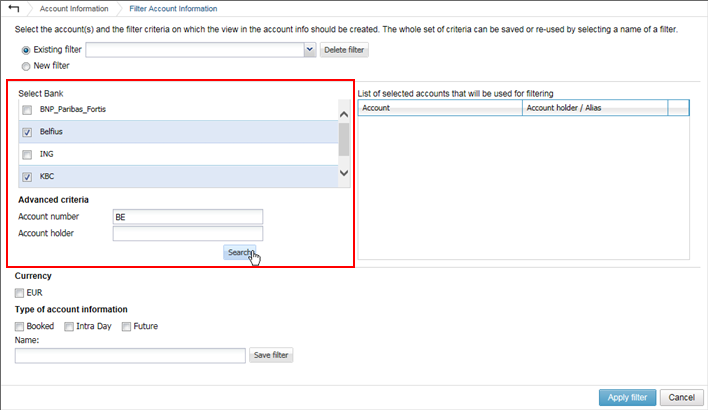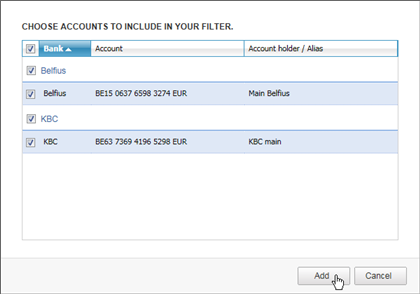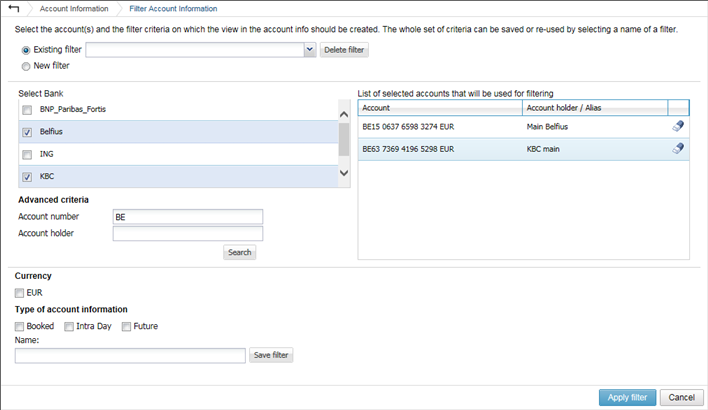Using filters can be of great help to organize your account information area the way you want to. A single account can be part of multiple filters. You can create your own custom filters.
Examples:
To manage (create, modify or delete) filters, go to the tab Account information and click on Filters in the left navigation menu. If you already have existing filters, you can easily switch between them through Account information.
Depending on the amount of available accounts a different view may appear
In case you have a lot of accounts, your view will not allow you to simply select your accounts from a list but forces you to search for your accounts.



Go to the preferences of Isabel 6, choose Account Info and choose your default filter